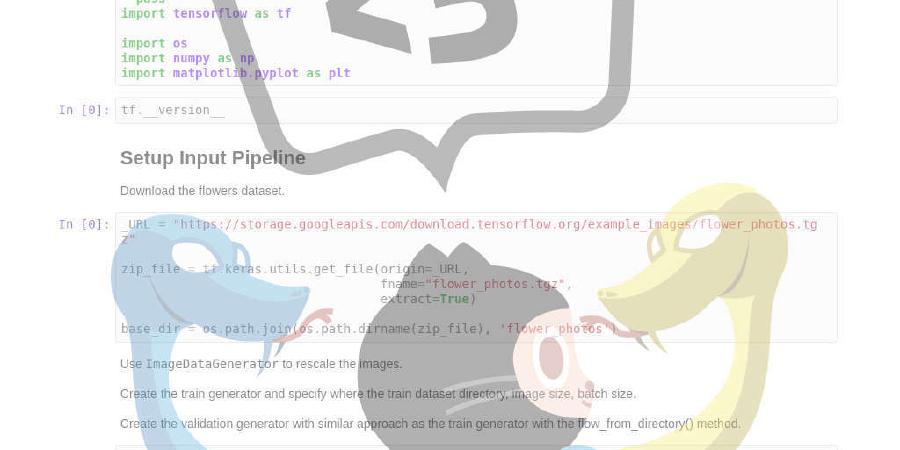MrGiovanni/UNetPlusPlus

Official Keras Implementation for UNet++ in IEEE Transactions on Medical Imaging and DLMIA 2018
| repo name | MrGiovanni/UNetPlusPlus |
| repo link | https://github.com/MrGiovanni/UNetPlusPlus |
| homepage | |
| language | Python |
| size (curr.) | 6002 kB |
| stars (curr.) | 754 |
| created | 2018-04-16 |
| license | MIT License |
UNet++: A Nested U-Net Architecture for Medical Image Segmentation
UNet++ is a new general purpose image segmentation architecture for more accurate image segmentation. UNet++ consists of U-Nets of varying depths whose decoders are densely connected at the same resolution via the redesigned skip pathways, which aim to address two key challenges of the U-Net: 1) unknown depth of the optimal architecture and 2) the unnecessarily restrictive design of skip connections.
Paper
This repository provides the official Keras implementation of UNet++ in the following papers:
UNet++: Redesigning Skip Connections to Exploit Multiscale Features in Image Segmentation Zongwei Zhou, Md Mahfuzur Rahman Siddiquee, Nima Tajbakhsh, and Jianming Liang Arizona State University IEEE Transactions on Medical Imaging (TMI) paper | code
UNet++: A Nested U-Net Architecture for Medical Image Segmentation Zongwei Zhou, Md Mahfuzur Rahman Siddiquee, Nima Tajbakhsh, and Jianming Liang Arizona State University Deep Learning in Medical Image Analysis (DLMIA) 2018. (Oral) paper | code | slides | poster | blog
Other implementation
What is in this repository
1. Available architectures
2. Available backbones
| Backbone model | Name | Weights |
|---|---|---|
| VGG16 | vgg16 |
imagenet |
| VGG19 | vgg19 |
imagenet |
| ResNet18 | resnet18 |
imagenet |
| ResNet34 | resnet34 |
imagenet |
| ResNet50 | resnet50 |
imagenetimagenet11k-places365ch |
| ResNet101 | resnet101 |
imagenet |
| ResNet152 | resnet152 |
imagenetimagenet11k |
| ResNeXt50 | resnext50 |
imagenet |
| ResNeXt101 | resnext101 |
imagenet |
| DenseNet121 | densenet121 |
imagenet |
| DenseNet169 | densenet169 |
imagenet |
| DenseNet201 | densenet201 |
imagenet |
| Inception V3 | inceptionv3 |
imagenet |
| Inception ResNet V2 | inceptionresnetv2 |
imagenet |
How to use UNet++
1. Requirements
Python 3.x, Keras 2.2.2, Tensorflow 1.4.1 and other common packages listed in requirements.txt.
2. Installation
git clone https://github.com/MrGiovanni/UNetPlusPlus.git
cd UNetPlusPlus
pip install -r requirements.txt
git submodule update --init --recursive
3. Running the scripts
Application 1: Data Science Bowl 2018
CUDA_VISIBLE_DEVICES=0 python DSB2018_application.py --run 1 \
--arch Xnet \
--backbone vgg16 \
--init random \
--decoder transpose \
--input_rows 96 \
--input_cols 96 \
--input_deps 3 \
--nb_class 1 \
--batch_size 2048 \
--weights None \
--verbose 1
Application 2: Liver Tumor Segmentation Challenge (LiTS)
Application 3: Polyp Segmentation (ASU-Mayo)
Application 4: Lung Image Database Consortium image collection (LIDC-IDRI)
Application 5: Multiparametric Brain Tumor Segmentation (BRATS 2013)
CUDA_VISIBLE_DEVICES=0 python BRATS2013_application.py --run 1 \
--arch Xnet \
--backbone vgg16 \
--init random \
--decoder transpose \
--input_rows 256 \
--input_cols 256 \
--input_deps 3 \
--nb_class 1 \
--batch_size 2048 \
--weights None \
--verbose 1
Code examples for your own data
Train a UNet++ structure (Xnet in the code):
from segmentation_models import Unet, Nestnet, Xnet
# prepare data
x, y = ... # range in [0,1], the network expects input channels of 3
# prepare model
model = Xnet(backbone_name='resnet50', encoder_weights='imagenet', decoder_block_type='transpose') # build UNet++
# model = Unet(backbone_name='resnet50', encoder_weights='imagenet', decoder_block_type='transpose') # build U-Net
# model = NestNet(backbone_name='resnet50', encoder_weights='imagenet', decoder_block_type='transpose') # build DLA
model.compile('Adam', 'binary_crossentropy', ['binary_accuracy'])
# train model
model.fit(x, y)
To do
- Add VGG backbone for UNet++
- Add ResNet backbone for UNet++
- Add ResNeXt backbone for UNet++
- Add DenseNet backbone for UNet++
- Add Inception backbone for UNet++
- Add Tiramisu and Tiramisu++
- Add FPN++
- Add Linknet++
- Add PSPNet++
Citation
If you use UNet++ for your research, please cite our papers:
@incollection{zhou2018unetplusplus,
title={Unet++: A nested u-net architecture for medical image segmentation},
author={Zhou, Zongwei and Siddiquee, Md Mahfuzur Rahman and Tajbakhsh, Nima and Liang, Jianming},
booktitle={Deep Learning in Medical Image Analysis and Multimodal Learning for Clinical Decision Support},
pages={3--11},
year={2018},
publisher={Springer}
}
Acknowledgments
This repository has been built upon qubvel/segmentation_models. We appreciate the effort of Pavel Yakubovskiy for providing well-organized segmentation models to the community. This research has been supported partially by NIH under Award Number R01HL128785, by ASU and Mayo Clinic through a Seed Grant and an Innovation Grant. The content is solely the responsibility of the authors and does not necessarily represent the official views of NIH. This is a patent-pending technology.





